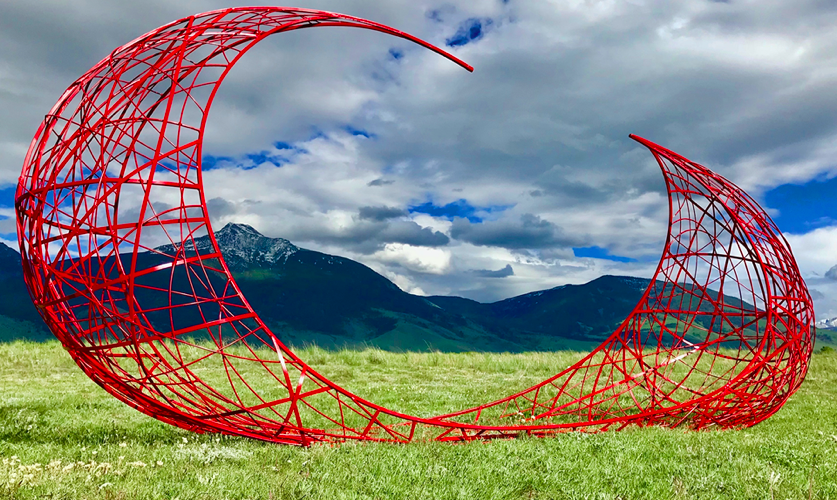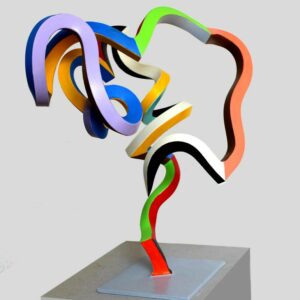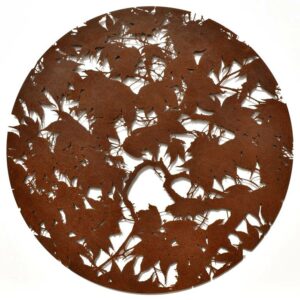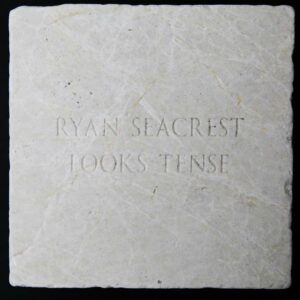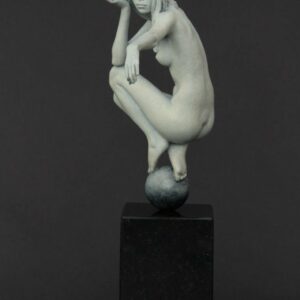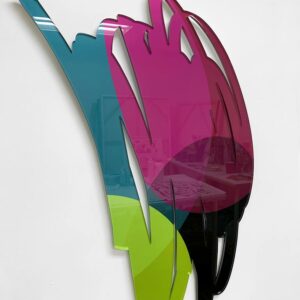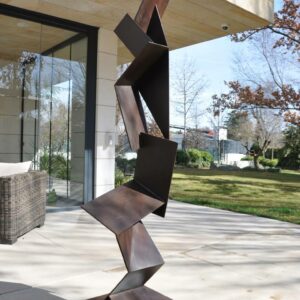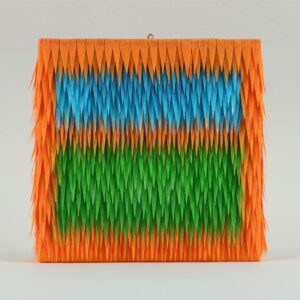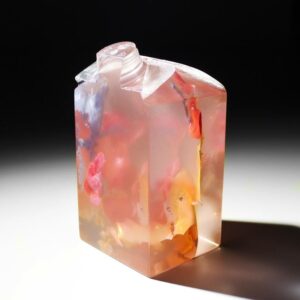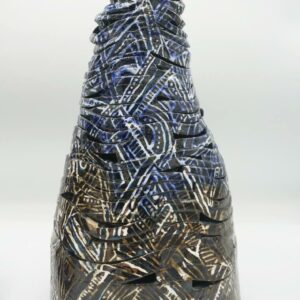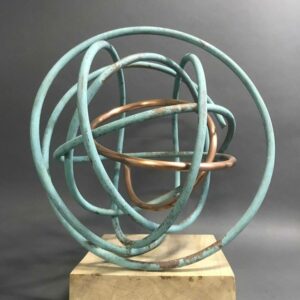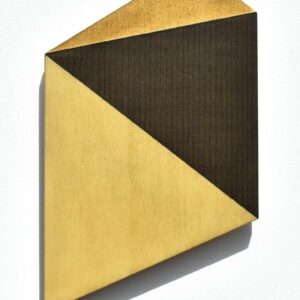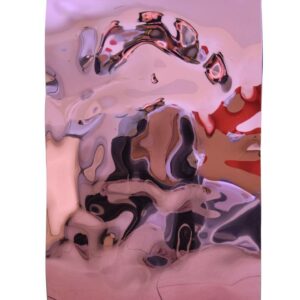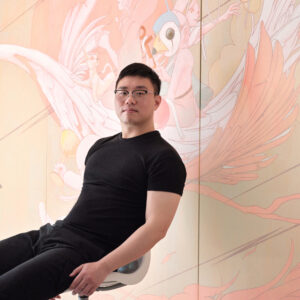How-To
How to Collect Sculptures
Purchasing art is an investment, and with each medium comes new factors to consider before adding an artwork to your collection. Known for its endless potential and, at times, monumental scale, sculpture can be daunting for seasoned art collectors and novices alike. Read on to get to know the medium’s key terms, techniques, and tips for display so that you can collect sculptures with confidence.
About the Medium
Sculpture may be the oldest known art form, with some ivory figurines discovered in Germany estimated to be 40,000 years old. Figurative sculpture flourished in the ancient civilizations of Egypt and Mesopotamia, but it was the lifelike ancient Greek sculptures that influenced European Renaissance artists such as Michelangelo and Donatello. Since then, artists have leaned into the boundless potential of three-dimensional space, exploring sculpture’s representational, conceptual, and emotional capacities.
Terms and Techniques
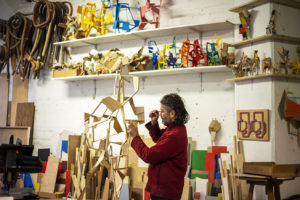
When we think of sculpture, we often think of freestanding pieces—these are called “sculpture in the round,” in contrast to reliefs, which protrude from a two-dimensional surface and are often wall-mounted. All sculptural building processes can be described as subtractive (carving or chipping away at materials) and additive (adding or building up materials):
- Modeling refers to building up a form with malleable materials, such as clay, for a ceramic artwork, or wax, which is used in casting.
- Casting involves creating a mold, often around a wax model, which is then melted out to allow the mold to be filled with molten bronze, resin, glass, or clay. Molds are often reused to create multiple sculptures.
- Carving, perhaps the oldest and most accessible process, means simply cutting or chipping into a material to achieve the desired form.
- Assemblage most often refers to combining found objects into a new artwork. Kinetic sculptures, such as those by Alexander Calder, are also made through the fine-tuned assembling of parts to create an artwork that can move.
Materials
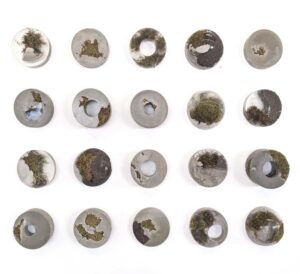
One of the most awe-inspiring aspects of sculpture is the enduring nature of its materials—bronze, stone, metal, and wood pieces used millennia ago are still intact, and artists continue to turn to the same materials today.
Marble was a favorite of Michelangelo’s, but other stones such as soapstone and alabaster are often used today, as they are easy to sculpt and widely available. Due to its fibrous nature, wood is another strong material that can be carved into even thinner forms than stone; its porosity, however, means that most wooden sculpture art is designed for indoor display.
Metals such as bronze (a favorite of Auguste Rodin’s), gold, aluminum, and iron are widely used to create detailed works of various sizes. They can be cast, welded, or hammered to form the artist’s desired outcome.
Clay is perhaps the most widely accessible material and is used to make ceramics. Glass sculpture is often made via glassblowing, or swirling, inflating, and reshaping hot molten glass. Clay and glass are relatively delicate materials and should be displayed with that in mind.
Contemporary artists are increasingly considering the environmental impact of art, so we have also seen a surge in the use of found objects and natural materials to make sculptures that are either preserved or designed to decay with time.
Popular Styles & Subjects
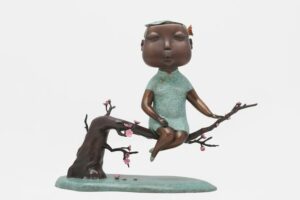
Some of the most renowned sculptures from history depict the human form, from Venus de Milo to Michelangelo’s David. Recurring nude figures, animal forms, and representations of nature from antiquity through the modern era attest to Western art’s perennial aim to capture the ideal in material form. Many contemporary artists continue in this tradition, creating timeless representations of the body, often in equally timeless materials, such as bronze or stone.
Though known for its representational capacities, sculpture also became a wellspring of conceptual, geometric, and abstract art with the advent of modernism. Abstracts and geometrics are particularly popular among collectors for their ability to extend color and texture into real space—art doesn’t have to stick to the walls! Another collector favorite, Pop art sculpture is marked by punchy and irreverent subject matter, synthetic colors, and novel production processes, such as neon and 3D printing, that can bring a dose of the unexpected to your home—it has also dominated the art market in recent years, with the likes of Jeff Koons and Damien Hirst fetching record-breaking auction sales.
Collecting Sculptures
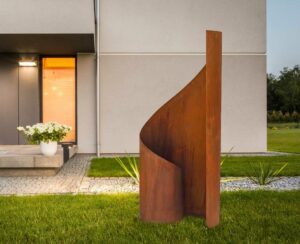
When investing in modern sculpture, keep in mind that if the work is oversized or made to order, there may be additional shipping and production time needed. Also, consider whether its materials are suited for indoor or outdoor display and whether your wall or ground can support the weight of the sculpture. When in doubt, contact our experienced art advisors for more information on shipping and installation requirements.
Though sculpture can require thorough planning, patience pays off with durable, timeless objects that elevate your collection in unconventional ways. Large-scale sculpture presents an opportunity to display art in overlooked areas of the home, such as your entryway or garden. But your first sculpture investment doesn’t have to be big in terms of scale, time, or money.
Love reading about all things art? You can have articles from Canvas, curated collections, and stories about emerging artists delivered straight to your inbox. Sign up for the Saatchi Art Newsletter.
